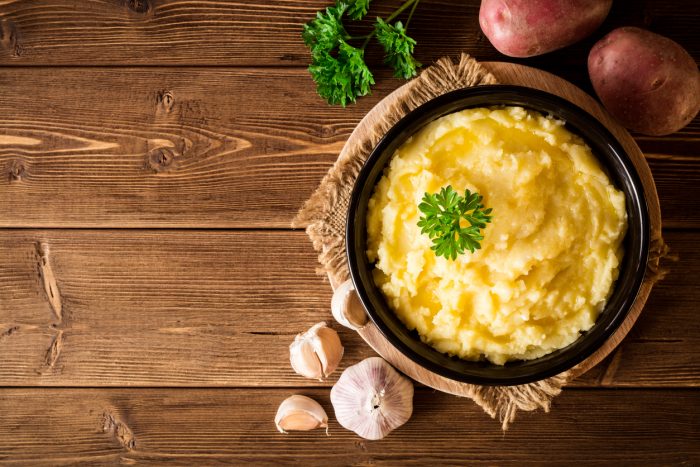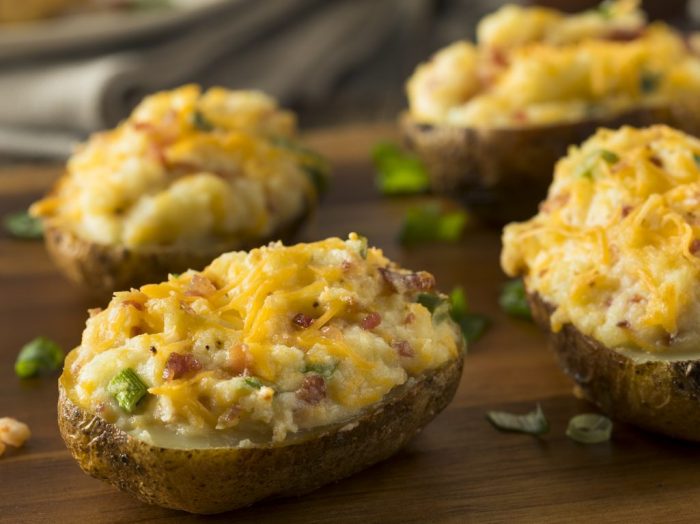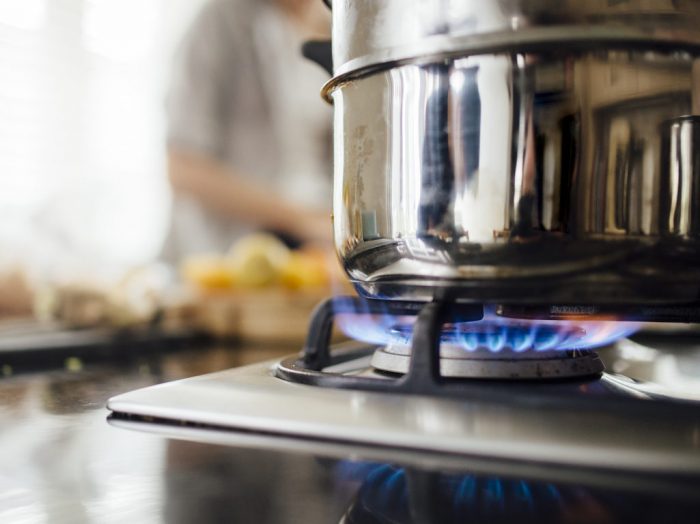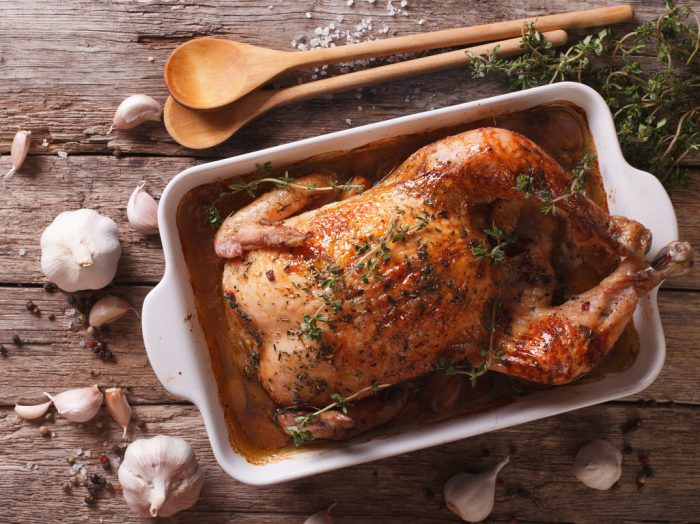Potatoes are such a versatile food: mash them, fry them, bake them, boil them – and they bring out such a wide variety of flavors, tastes and even memories (at least for me). They work as a side but also as a main dish, and they’re always great to have around. But what potato cooking mistakes do people tend to make? And how do you sidestep that? See below for all the answers!
I would have a huge batch of French fries every day. Or a big bowl of creamy sweet mashed potatoes. Or maybe some rosemary-flavored baked potatoes, hot from the oven. Bottom line? I sort of kind of absolutely love potatoes and want to bring out the best in them when I cook. That’s not always what happens, but I try to learn from my potato cooking mistakes.
There is one rule you must learn to instantly make less potato cooking mistakes: there are three large categories of potato varieties. And not all of them are suited for all of the dishes you want to cook! Here are the three categories!
3 categories of potatoes
1. Starchy potatoes
These varieties of potatoes are very high in starch and low in moisture. Their fluffiness makes them ideal for boiling, baking, and frying. Their one con is that they don’t hold their shape when cooked, so you can’t use them for casseroles, potato salads or gratins. Among these varieties, take note of the ubiquitous Idaho or Russet ones. They might also be called “the baking potato”.
2. Waxy potatoes
This is the category with the lowest starch content and most moisture. New potatoes, Red Bliss, or baby potatoes fall into the waxy category. They have a creamy, firm and moist consistency and they hold their shape after baking or cooking. So if you have a casserole, soup, or potato salad you have been meaning to try, these are for you!
3. All-purpose potatoes
All-purpose potato varieties like Yukon (the most popular one) fall somewhere between the starchy and the waxy categories. They’re not as starchy as an Idaho, but starchier than new potatoes, for instance. These mostly work for almost all potato dishes you might think of, so they’re an excellent item to have in the house at all times!
Find out more about potato types right here.
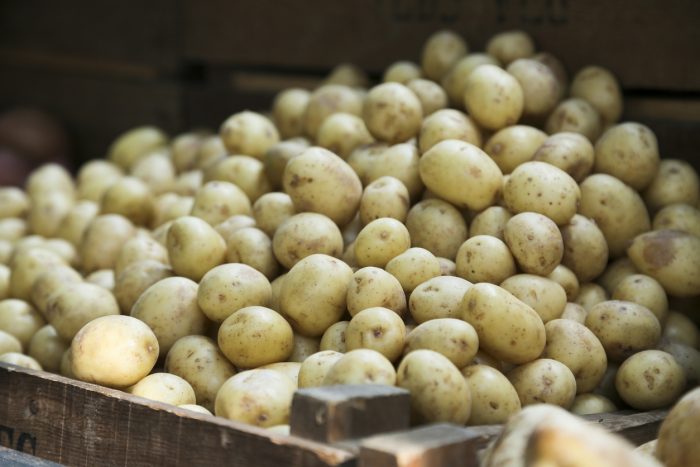
5 potato cooking mistakes to avoid
1. Eating green potatoes
Green is a good sign for freshness in other vegetables, but it’s not so for potatoes. That green shade under the skin means that there is too much of a toxic compound in them called solanine. All potatoes contain solanine, at normal levels, which the human body can process and dispose of without any risk. But when the potato looks green, the compound has built up to an amount that could make you ill. Very ill, actually.
On the same note, do not eat shriveled potatoes either, because they can also make you sick, even if they seem salvageable for your dinner. And while we’re at it, make sure to remove the potato sprouts if any, because they also contain pretty high amounts of solanine.
2. Not storing potatoes properly
You should keep your spuds in a cool environment and don’t expose them to sunlight. That environment can surely be the fridge, where they keep for a few months. But the fridge temperature tends to slightly change the color and flavor of the potato to sweeter and darker. You can override that if you keep the potato at room temperature for a few days before you get with the cooking. But after all, who keeps potatoes in the fridge for that long, when you can make a meal out of them?
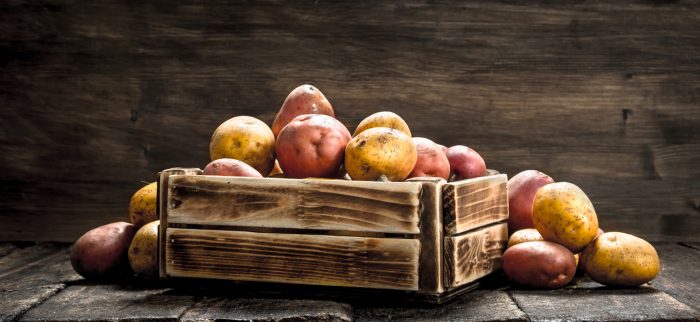
3. Over-mashing the potatoes
Mashed potatoes are one of the most delicious ways to cook them and it’s very easy to get you result askew. First of all, you should choose starchy potatoes for the job thanks to the fluffiness. But an all-purpose like classic Yukon should do just fine and dandy.
But the main thing you should look out for when making mashed potatoes is overworking them. Because of the starches, overworking the potatoes can lead to a gooey mess – and believe me, I’ve been there… and I couldn’t eat. Gulp! Gently mash or whisk. But don’t use a food processor, because that is the very definition of overworking them.
4. Do not cook them wet!
What are potato goals? I think we all share the same ones! Perfect potatoes should be fluffy and light on the inside but have a bit of a crisp to them on the outside. So when you roast them, you have to make sure that they’re dried off. Any water on the surface of the potatoes will steam them, killing your crispy dream forever. So wash them at least 10 minutes before you cook them and dry them as best as you can.
5. Choosing the wrong potatoes for different soups
This depends on what kind of soup you are making. There are soups where you want your potatoes to retain their shape and not melt away in the liquid. In this case, choose waxy potatoes! They’re the best for the job. But if you want to make a creamy soup with a potato base, you should reach for the starchy type of spuds, because they tend to dissolve easier.
And since you’re making some potato soup or a soup with potato chunks, don’t add them too early in the process. That’s another one of those pesky potato cooking mistakes. If you’re slow cooking, add them in the last hour to make sure that they’re tender, but not completely and utterly mashed!
